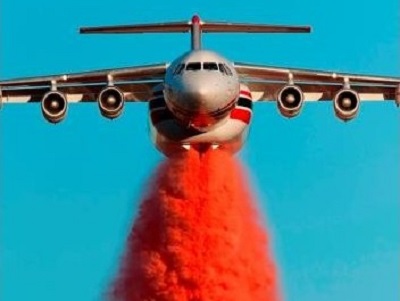Training services and technology firm CAE Inc. is teaming up with Conair Aerial Firefighting to develop a wildfire training centre in British Columbia that will feature a distributed mission simulation environment akin to what military forces are using.
“As far as I know, this will be the first of its kind for wildfire training,” Mike Greenley, vice-president and general manager of CAE Canada, said in an interview with Vanguard. “Essentially, the simulation centre will enable chemical and water attack plane pilots, command centre personnel and the firefight commander to train together and interact within a simulated scenario just as they would in a real fire.”
Distributed mission simulation has been used by various military forces for some time now. This is, however, probably the first instance such a technique will be used for wildfire control training.
CAE and Conair signed a memorandum of understanding (MOU) last week to establish a new wildfire and simulation centre in B.C. that will feature a CAE-built Avro RJ85 full-flight simulator qualified to Level D – the highest qualification for flight simulators.
RELATED CONTENT
CAE Healthcare gets go signal for STOP S Cut Suit
BC aerospace research gets $7.3 million investment
Conair will procure the long-term pilot training services from CAE to train their pilots who provide aerial fire suppression services using Conair’s RJ85 Airtanker aircraft.
The RJ85s were originally commercial airplanes. They were typically used in smaller airports. Their ability to navigate tight spots make them ideal for use in firefighting missions, according to Greenley.
Over the next few months, Conair and CAE are expected to identify the training centre location and requirements, begin procurement of the RJ85 full-flight simulator and “engage other potential clients in Canada and internationally.
“We are the leading provider of aerial fire control products and services, and as a leader we need out people to be skilled and trained,” said Barry Marsden, chief executive officer of Conair. “The new wildfire training and simulation centre will contribute to the preparation and readiness of our pilots.”
Greenley said they are also plans to expand the use of the simulation centre beyond B.C.
“Our objective is to extend the distributed mission environment,” he said. “We plan to make the simulation centre in B.C. a part of a distributed simulation network that connects wildfire training across Canada.”
